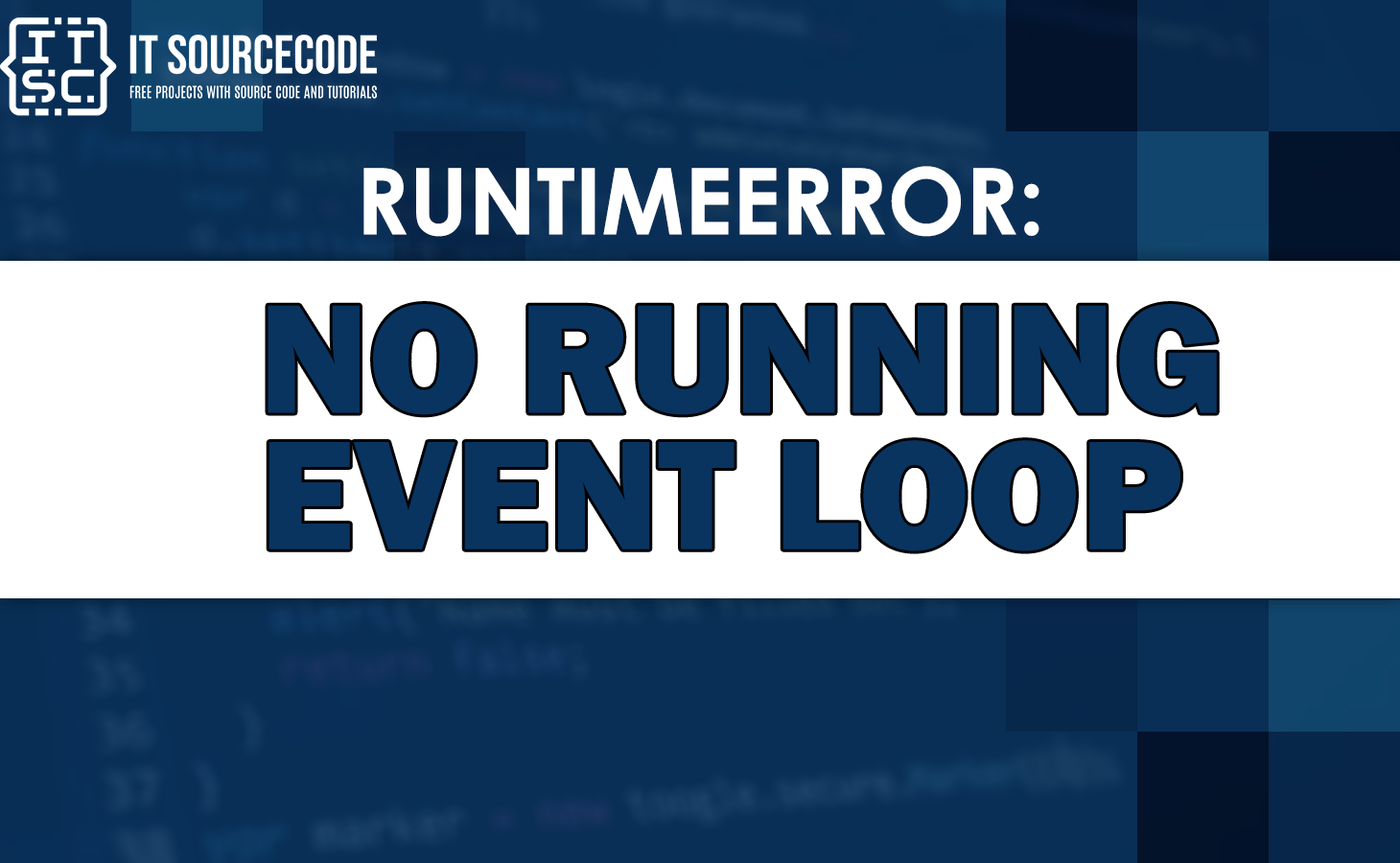One of the error that developers often encounter is the runtimeerror: no running event loop error.
The purpose of this article is to provide a full understanding of this error, its causes, and effective solutions to solve it.
So, let’s explore into the world of runtime errors and analyze on how to resolve this peculiar issue.
What does runtimeerror no running event loop means?
The error message “runtimeerror no running event loop” means that it typically occurs in programming languages that handle asynchronous or event-driven programming paradigms.
Common Causes of the Error
The following are common causes of the error:
- Missing or Incorrect Event Loop Initialization
- Improper Asynchronous Code Handling
- Conflicting Event Loops
- Missing or Misconfigured Event Loop Initialization
- Running Code Outside an Event Loop
- Using Incompatible Libraries or Modules
- Concurrency Issues
How to Resolve this Error RuntimeError: No Running Event Loop?
There are different solutions you can apply to resolve this issue.
Here are some effective solutions to fix:
Method 1: Correct Event Loop Initialization
You need to double-check that you have initialized the event loop correctly before running any code that expect on it.
Make sure to follow the necessary requirements of the event loop operation you are using.
Method 2: Check Event Loop Usage:
You need to check your program to make sure that any code which require an event loop is being executed within its proper context.
For example, if you are using an asynchronous framework, make sure the code is within an asynchronous function or coroutine.
Method 3: Check Compatibility
If you are certain that the compatibility issues between the event loop and your code or libraries, inspect the requirements and compatibility guidelines of each component.
It is necessary to find alternative libraries or update existing ones to make sure compatibility.
Method 4: Avoid Multiple Event Loops
If your program applies multiple event loops, modify it to use a single event loop. This helps prevent conflicts and it will provide the presence of an active event loop.
Method 5: Update Libraries and Modules
You can check that all libraries and modules you are using in the program are outdated and compatible with each other.
Updating to the latest versions can resolve any known issues related to the event loop.
Additional Resources
Here are the articles that can help you to understand more about Runtimeerrors:
- Runtimeerror: event loop is closed
- Runtimeerror: trying to resize storage that is not resizable
- Runtimeerror main thread is not in main loop
- Cuda error: an illegal memory access was encountered
- Runtimeerror: cuda out of memory. tried to allocate
Conclusion
In conclusion, the runtimeerror: no running event loop error is a common issue encountered by programmers working with asynchronous or event-driven programming paradigms.
Knowing the causes and applying appropriate solutions can help you avoid this error effectively.
FAQs
You can check the existence of an active event loop by using the asyncio.get_event_loop() function.
This error often occurs when working with asynchronous libraries because they massively rely on event loops.
Event loops can be initialized using the asyncio.get_event_loop() function, which returns the current event loop if one exists.
Yes, it is possible to have multiple event loops running concurrently. However, it is necessary to manage them correctly to avoid conflicts and synchronization issues.

